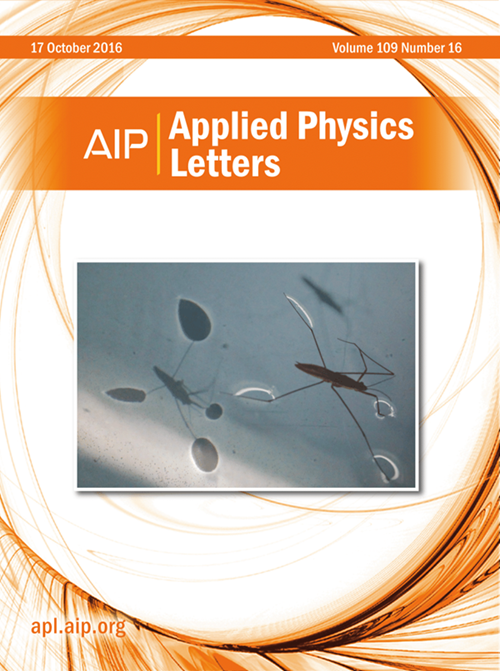用于神经形态计算的基于sio2的反转感应MOS电容突触
IF 3.5
2区 物理与天体物理
Q2 PHYSICS, APPLIED
引用次数: 0
摘要
在这项工作中,利用同心金属-氧化物-半导体结构中的横向耦合效应,介绍了一种基于sio2的反转感应电容突触器件。该器件在低编程电压VPGM =−2.5 V下实现了24的CHCS/CLCS比。计算机辅助设计(TCAD)模拟证实了该器件对外部电荷变化的高灵敏度。对于有效正电荷密度(Neff)超过2.8×1011 cm−2的氧化物,5×109 cm−2的微小变化会对器件在反转区的电容值产生很大影响。这种灵敏度通过调整脉冲数和工作电压实现了多态电容调制。此外,通过仿真验证了该器件的可扩展性。采用栅极介质材料可进一步提高开关比。总的来说,横向耦合效应不仅提高了基于电荷捕获的器件的性能,而且为跨各种类型的电容存储技术扩展存储窗口提供了一种可行的策略。本文章由计算机程序翻译,如有差异,请以英文原文为准。
Inversion-sensing SiO2-based MOS capacitive synapse for neuromorphic computing
In this work, an inversion-sensing SiO2-based capacitive synapse device was introduced by using the lateral coupling effect in a concentric metal–oxide–semiconductor structure. The device achieved a CHCS/CLCS ratio of 24 with a low programming voltage of VPGM = −2.5 V. Technology Computer Aided Design (TCAD) simulations confirmed the device's high sensitivity to changes in external charges. For oxide with an effective positive charge density (Neff) exceeding 2.8×1011 cm−2, a small variation of 5×109 cm−2 could influence a lot in the capacitance value of the device in the inversion region. This sensitivity enabled multi-state capacitance modulation by adjusting the number of pulses and operating voltages. Additionally, the scalability of the device was validated through simulations. The on/off ratio could be further improved by substituting the gate dielectric material. Overall, the lateral coupling effect not only enhances the performance of charge-trapping-based devices but also provides a viable strategy for expanding memory windows across various types of capacitive memory technologies.
求助全文
通过发布文献求助,成功后即可免费获取论文全文。
去求助
来源期刊

Applied Physics Letters
物理-物理:应用
CiteScore
6.40
自引率
10.00%
发文量
1821
审稿时长
1.6 months
期刊介绍:
Applied Physics Letters (APL) features concise, up-to-date reports on significant new findings in applied physics. Emphasizing rapid dissemination of key data and new physical insights, APL offers prompt publication of new experimental and theoretical papers reporting applications of physics phenomena to all branches of science, engineering, and modern technology.
In addition to regular articles, the journal also publishes invited Fast Track, Perspectives, and in-depth Editorials which report on cutting-edge areas in applied physics.
APL Perspectives are forward-looking invited letters which highlight recent developments or discoveries. Emphasis is placed on very recent developments, potentially disruptive technologies, open questions and possible solutions. They also include a mini-roadmap detailing where the community should direct efforts in order for the phenomena to be viable for application and the challenges associated with meeting that performance threshold. Perspectives are characterized by personal viewpoints and opinions of recognized experts in the field.
Fast Track articles are invited original research articles that report results that are particularly novel and important or provide a significant advancement in an emerging field. Because of the urgency and scientific importance of the work, the peer review process is accelerated. If, during the review process, it becomes apparent that the paper does not meet the Fast Track criterion, it is returned to a normal track.
 求助内容:
求助内容: 应助结果提醒方式:
应助结果提醒方式:


